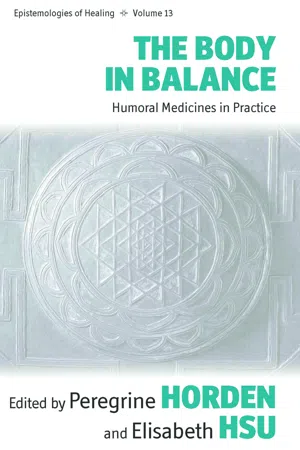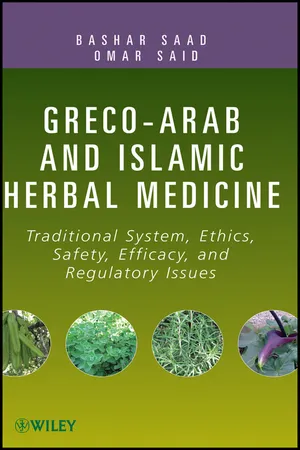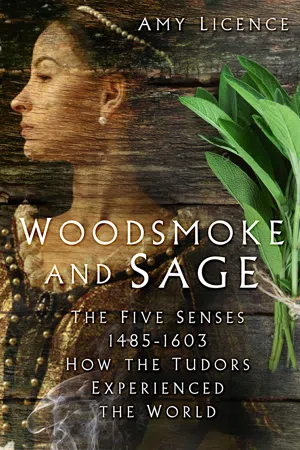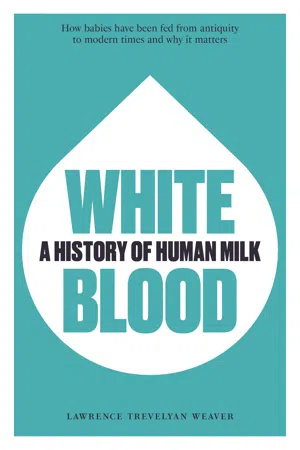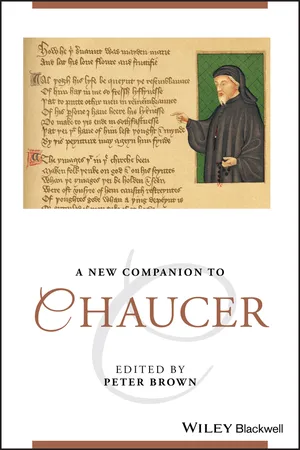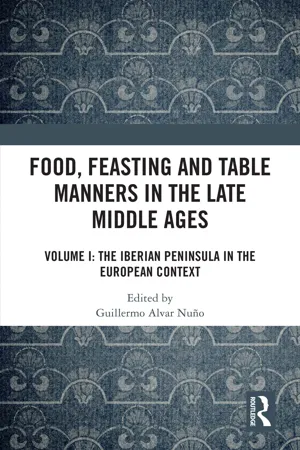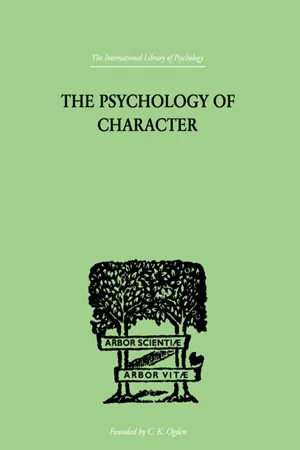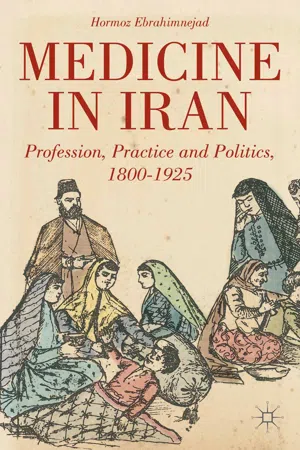History
Theory of the Four Humours
The Theory of the Four Humours was a medical concept in ancient and medieval times that proposed the body was governed by four bodily fluids: blood, phlegm, black bile, and yellow bile. It was believed that an imbalance of these humours caused illness, and treatments aimed to restore equilibrium. This theory heavily influenced medical practices and understanding of the body for centuries.
Written by Perlego with AI-assistance
11 Key excerpts on "Theory of the Four Humours"
- eBook - ePub
The Body in Balance
Humoral Medicines in Practice
- Peregrine Horden, Elisabeth Hsu(Authors)
- 2013(Publication Date)
- Berghahn Books(Publisher)
Philolaus regarded the three humours not as constituent parts of the body but as the result of changes within it. 13 The fourth-century BC physician Diocles of Carystus named four humours (blood, phlegm, bile and black bile) which came from the food consumed and were then affected by heat to make the different substances (van der Eijk 2001, fr. 27, 40). In the Hippocratic On Generation/On the Nature of the Child and the related Diseases 4, an alternative four-humour theory is found, with each of the four being linked to an organ: blood (heart), phlegm (head), water (spleen) and bile (a receptacle on the liver). 14 According to Galen in On the Natural Faculties 2.9 (Loeb 216–18), Praxagoras had a ten- or, as he did not include blood in his list of ten, even eleven-humour theory (Steckerl 1958, fr. 21; Smith 1979: 188; Nutton 2005: 118). Finally, there are also fluids other than humours which play a very important role in ancient medicine, including urine, sweat, mucus, milk, tears and semen. But it is in only one of the sixty or so ‘Hippocratic’ texts – On the Nature of Man, thought to date to the late fifth century BC – that the specific ‘canonical’ four of blood, phlegm, black bile and yellow bile are named, and here they are seen as intrinsic to the body rather than as the products of disease. In anthropological terms, the colours could be seen as significant, Berlin and Kay (1969) having argued in a controversial book that if the colour field is divided into four then these four will be black, white, red and either green or yellow. On the Nature of Man states that: The body of man has in itself blood, phlegm, yellow bile and black bile; these make up the nature of his body, and through these he feels pain or enjoys health. Now he enjoys the most perfect health when these elements are duly proportioned to one another in respect of compounding, power and bulk, and when they are perfectly mingled - eBook - ePub
Greco-Arab and Islamic Herbal Medicine
Traditional System, Ethics, Safety, Efficacy, and Regulatory Issues
- Bashar Saad, Omar Said(Authors)
- 2011(Publication Date)
- Wiley(Publisher)
The Greek and Roman humor theory or humoralism of the human body had a great influence on the development of the Greco-Arab medical system. Hippocrates was the first to apply this idea to medicine and it became strongly accepted in the medical canon through the influence of Galen. The humoral theory was adopted and further developed by Arab–Muslim physicians, and it became the most commonly held view of the human body among European physicians until the advent of the modern medical research in the nineteenth century [1–8]. This chapter highlights both the basic concepts of the humoral theory and the methods of therapy of the Greco-Arab and Islamic medicine.7.2 The Four Humors Theory 7.2.1 ConceptHippocrates laid the foundations of the Greco-Arab theory that thoughts, ideas, and feelings, which he proposed to originate in the brain, can influence health and the process of disease. In Hippocrates's view, the process of healing and the purpose of medicating held one and the same goal, to assist the patient in regaining harmonious balance of the tendencies within him/herself and external forces. He formulated a set of principles that helped to define the tendencies (i.e., temperaments) of each patient, and he claimed that the root of one's temperament was derived from the four humors dominant in the body.Essentially, this theory held that the human body contains four basic fluids, called humors, that are in balance in healthy persons. Imbalances, for example, an excess or deficit in one of the four humors, results in the development of a disease state. The four humors in the body are blood, phlegm, yellow bile, and black bile. Each humor has its specific temperament, for example, blood is hot and moist, phlegm is cold and moist, yellow bile is hot and dry, and black bile is cold and dry. The humors are held in balance when a person is in a healthy state, which is controlled by self-preservation power called medicatrix naturae - eBook - ePub
Woodsmoke and Sage
The Five Senses 1485-1603: How the Tudors Experienced the World
- Amy Licence(Author)
- 2021(Publication Date)
- The History Press(Publisher)
In Tudor England, survival frequently depended upon physical strength and good health. As part of a more physically exuberant culture, whether labouring, hunting, riding or fighting, with life-threatening diseases recurring year after year and limited medical assistance in cases of accident, illness and childbirth, keeping healthy was a delicate balancing act for the sixteenth-century man, woman and child. The best path was a combination of dietary and astrological advice, a heavy weighting of prayer and avoiding excess in all things.As Thomas Elyot outlined in his 1534 The Castel of Helth , the Galenic theory of humours underpinned sixteenth-century understanding about the workings of the body and mind and how it related to the natural world, resulting in some unusual conclusions about the best way to maximise health and treat illness. Each individual body contained a mixture of the four humours; sanguine (blood), phlegmatic (phlegm), choleric (yellow bile) and melancholy (black bile), which broadly corresponded to four states: heat, cold, moisture and dryness, and the four elements: earth, air, fire and water. Usually one type was slightly more prevalent, but some individuals were believed to experience a great imbalance, resulting in the dominance of certain characteristics or combinations, such as hot and dry, or hot and moist. This might be the result of natural disposition towards one type, illness or infection, the result of diet, or exposure to extreme temperatures or external factors.A sanguine individual, with an excess of blood, was predominantly hot and moist, and ruled by the air. They were characterised by ‘carnosity’ or fleshiness, and addicted to matters of the flesh, having large appetites for food, drink and sex. They had plentiful hair, which might be red or reddish, while the face was pale and ruddy, with red cheeks, and their veins and arteries were large and their pulse strong. They slept a lot and had vivid dreams of either ‘bloody’ or pleasant things, had perfect digestion and sweated profusely. Quick to anger, they produced ‘red and gross’ urine and bled copiously.1 - eBook - ePub
White Blood
A History of Human Milk
- Lawrence Trevelyan Weaver(Author)
- 2021(Publication Date)
- Unicorn(Publisher)
bc ), describes the theory as follows:The Human body contains blood, phlegm, yellow bile and black bile. These are the things that make up its constitution and cause its pains and health. Health is primarily that state in which these constituent substances are in the correct proportion to each other, both in strength and quantity, and are well mixed. Pain occurs when one of the substances presents either a deficiency or an excess, or is separated in the body and not mixed with others.The four elements and the four humours39Galenic physiology of digestion, nutrition, transmutation and generation40 The humoral body of the ancients was formed of solid and fluid parts: organs (stomach, liver, heart, brain, urinary and generative organs) linked by tubes (gut, veins, arteries, nerves, urinary tract) through which fluids flowed under the influence of heat, moisture, pneuma and spirits.The principal organs (solid parts) were the seats of four ‘faculties’ – the liver of nutrition and growth, the heart of vitality and the passions, the brain of sensation, movement and cognition, and the genitalia of generation or formation – operated by changes in the relative balance of the humours: attraction (e.g. appetite) by heat and dryness; mutation (e.g. digestion) by heat and moisture; retention (e.g. growth) by coldness and dryness; and expulsion (e.g. excretion) by coldness and moisture. The function of the body was regulated by these faculties, whereby genesis and flux of the humours within and between its solid parts permitted the transmutation of blood into milk (in mother’s breasts) and milk into flesh (in baby’s body). The digestion of milk began in the stomach, where it was ‘cooked’ (concocted) by the natural heat of the body ‘as the flame of a torch consumes oil, wax, tallow, so doth it alter and digest the nutritive matter’ into chyle. An anonymous fourteenth- century scribe illustrates overleaf the circular stomach in which the four humours that mediate coction are represented as red protrusions on the inner walls. - eBook - ePub
Culpeper's Medicine
A Practice of Western Holistic Medicine New Edition
- Graeme Tobyn(Author)
- 0(Publication Date)
- Singing Dragon(Publisher)
chole in Greek mean ‘black bile’). And excessive phlegm, pertaining to the element water and to the qualities of cold and moist, gave a phlegmatic temperament.In the same way in which the elements were not literally those things in the world, so too the humours were not simply reducible to body fluids. The phlegmatic humour, for instance, was not constituted simply of phlegm, lymph or serous fluid and neither was it simply all three. Urine, through a body fluid, was not regarded as a humour. Instead, the 4 humours were thought of as ‘essences’ or ‘radical humours’, quasi-material in nature and therefore more than the actual body fluids with which they were associated.27The 4 humours, therefore, stood as components of the smaller world or microcosm that was the human body, in reflection of the 4 elements constituting the larger world or macrocosm.Nature was constituted by the four elements, the human body by the four humours, and elements and humours had their elementary qualities in common. They formed the bridge between the microcosm and macrocosm.28Observation and reasoning on the 4 humours of the body came from the Hippocratic school of medicine. They fitted comfortably with the physics of elements and qualities taught by Aristotle and were easily assimilated into Galen’s theory of medicine.Greek physicians believed that they had found actual evidence of the existence of 4 humours in the contents of an emptied blood vessel. It was noted that when blood coagulates, an upper, light red layer (oxygenated red corpuscles), which was reckoned to be the blood humour itself, separates from the dark red coagulum (poorly oxygenated red corpuscles), called the black bile humour, below. Further contraction of this coagulum releases a clear yellow liquid (blood serum), corresponding to the yellow bile humour. If the blood was whisked before coagulation, a fourth humour, phlegm, was seen as a yellowish-white, fibrous mass (fibrin), sticking to the whisk.29 - eBook - ePub
Blood Will Out
Essays on Liquid Transfers and Flows
- Janet Carsten(Author)
- 2013(Publication Date)
- Wiley-Blackwell(Publisher)
1 Since then, it has become evident that blood played an extraordinarily important role in medieval Europe. The ancient civilizations on which medieval European culture was based – whether Roman, Greek, Germanic, or Hebrew – already accorded blood great significance, in blood sacrifices, heroic bloodshed, exchange of blood, and blood-centred physiology. The Middle Ages (i.e. the millennium roughly between 500 and 1500 CE) inherited this valuation of blood, and every major institution and discourse (Church, monasteries, courts, and cities; medicine, law, and the arts) stamped its own meaning on blood. In the following, I give a brief overview of the significance of blood in religion, law, courts, fiction, and especially medicine, before highlighting five characteristics of blood that are consistent across these discourses: blood as authenticity effect; blood as part of a body-soul unit; blood as defining the outlines of the person; Christ's blood as exceptional; and blood as inferior. I shall show that blood was believed to grant access to the truth as well as to hold body and soul together, separate from the external world, but always precariously so.Ancient and medical medicine is often labelled ‘humoral medicine’ because it most basically understands the body as a container of four bodily fluids called humours: red blood, which was hot and moist; white phlegm, which was cold and moist; black bile, which was cold and dry; and yellow bile, which was hot and dry. Depending on the dominant humour, every human being belonged to one of four main character types or temperaments, whose names are still widely known: sanguine (with a predominance of blood), phlegmatic (dominated by phlegm), choleric (dominated by yellow bile), and melancholic (dominated by black bile). All four humours were made from food at various stages of digestion; and they were all transported through the body in blood. This means that there was also a second, wider definition of blood as a carrier and mixture of the four humours. Other bodily fluids, specifically breast milk, menstrual blood, and semen, were also thought to be blood at more advanced stages of digestion.To be ill was to have an imbalance of humours, usually with one of the four dominating to an extent that was no longer merely due to the temperament with which one was born. Measures to restore balance often regulated food intake by prohibiting foods that would produce the excessive humour, and encouraged those foods as well as activities that would stimulate the production of the other three. Therapists also removed the excessive humour through blood-letting using sophisticated techniques to ensure that it was mostly the superfluous humour rather than the other three that was drawn out. - eBook - ePub
- Peter Brown(Author)
- 2019(Publication Date)
- Wiley-Blackwell(Publisher)
4 BodiesLinda Ehrsam VoigtsWhen we describe someone as in a “good humour,” “phlegmatic,” or “mercurial,” or speak of “Satur[ns]day,” our words echo some of the humoural and astrological understandings of the body that informed many of Chaucer’s characters and that dominated Western thought from classical antiquity until the nineteenth century. This chapter aims to provide a basic grounding in fourteenth‐century beliefs about the human body and its inseparable temperament. It focuses on four important assumptions for understanding and appreciating Chaucer’s portrayals of bodies and their corresponding personalities: humoural physiology, planetary dominance, healthy habits, and lovesickness as a disease.Humours
For much of Western history, the body was understood as one pattern of fours in a tetralogical universe. The bodily tetrad, the four humours, corresponded to and expressed the four elements – earth, air, fire, water – and the four qualities: moistness, aridity, heat, cold. These elements and qualities had been understood as the building blocks of the terrestrial world since the fifth century BC in ancient Greece. In the Knight’s Tale, Arcite describes the extent of his inconsolable plight when he says, “ther nys erthe, water, fir, ne eir, | Ne creature that of hem maked is, | That may me helpe or doon confort in this” (KnT 1246–8). The expertise of the Doctor of Physic is illustrated by his knowledge of qualities and humours:He knew the cause of everich maladye, Were it of hoot, or coold, or moyste, or drye, And where they engendred, and of what humour. (GP 419–21)The four bodily equivalents of elements and qualities, the humours, were blood, choler, melancholy, and phlegm. Choler was also known as bile or yellow bile, and melancholy as black bile. Humoural physiology linked the body to everything else in the universe, and over the centuries the humours and their cosmological connections were extensively written about and illustrated. A widely distributed table beneath the zodiac figure in Figure 4.1 - eBook - ePub
Food, Feasting and Table Manners in the Late Middle Ages
Volume I: The Iberian Peninsula in the European Context
- Guillermo Alvar Nuño(Author)
- 2023(Publication Date)
- Routledge(Publisher)
3 The theory of humours applied to food in the Middle Ages From the Graeco-Roman tradition to mediaeval Latin Europe María Teresa Santamaría HernándezDOI: 10.4324/9781003318286-4Introduction
Throughout the mediaeval period, the notion that food had therapeutic properties was ubiquitous in practical and theoretical medical treatises alike, albeit the latter were more typical of the Late Middle Ages. Moreover, all mediaeval dietary recommendations, including those regarding foodstuffs and nutrition, remained closely anchored to the classical Hippocratic- Galenic concept of health and disease, whereby ailments were interpreted as being the result of a humoural imbalance. Consequently, therapeutic procedures were aimed at regaining balance in order to restore health. It should be noted that the ancient concept of dietetics was not only concerned with food but also encompassed everything related to exercise, age, sex, sleep and wakefulness, as well as the influence of the seasons and the environment on human health. From this perspective, then, it is understandable that besides medicinal substances and products, foods were also thought to possess some of the four elementary qualities of the humours, often combined in pairs. Thus, just like medicines and other therapeutic resources, their consumption could counteract an excess or deficit of the humours, either attenuating or increasing them.It was within this conceptual framework that treatises drawing on the Graeco-Roman concept of a therapeutic diet appeared, some devoted exclusively to this notion and others including it in the context of related issues, usually the treatment of various diseases.1 Such treatises thus contained what we could call a humoural vision of foodstuffs, including an analysis and exposition of their nature and composition in terms of the four humours and of their capacity to stimulate or inhibit specific humours and to increase or attenuate their qualities when these affected the body. Besides their therapeutic use to alleviate the effects of specific illnesses or to cure them entirely, foodstuffs were often recommended in the treatises for preventive purposes, in order to avoid the onset of illness as far as possible.2 - eBook - ePub
The Psychology Of Character
WITH A SURVEY OF PERSONALITY IN GENERAL
- A.A. Roback(Author)
- 2013(Publication Date)
- Routledge(Publisher)
Cynthia’s Revels as “ neither too fantastically melancholy, too slowly phlegmatic, too lightly sanguine, nor too rashly choleric ; but in all so composed and ordered, as it is clear nature went about some full work ”. Ben Jonson expresses himself with greater scientific pretensions, if not precision, in his play, “ Every Man Out of his Humor,” where he writes :—Why humour, as it is ‘ ens ’, we thus define it, To be a quality of air or water ; And in itself holds these two properties Moisture and fluxure : as, for demonstration Pour water on this floor. Twill wet and run. Likewise the air forced through a horn or trumpet Flows instantly away, and leaves behind A kind of dew ; and hence we do conclude That whatsoe’er hath fluxure and humidity As wanting power to contain itself Is humour. So in every human body The choler, melancholy, phlegm and blood By reason that they flow continually In some one part and are not continent Receive the name of humours. Now thus far It may, by metaphor, apply itself Unto the general disposition ; As when some one peculiar quality Doth so possess a man that it doth draw All his effects, his spirits and his powers, In their confluxion all to run one way,— This may be truly said to be a humour.Burton on the Humors . It is, however, in Burton’s famed Anatomy of Melancholy that we find a detailed and quaint, not to say fantastic, description of the humoral doctrine :—A humour is a liquid or fluent part of the body comprehended in it, and is either born with us, or is adventitious and acquisite. The first four primary humours are—Blood, a hot, sweet, temperate, red humour, prepared in the meseraic veins, and made of the most temperate parts of the chylus (chyle) in the liver, whose office it is to nourish the whole body, to give it strength and colour, being dispersed through every part of it. And from it spirits are first begotten in the heart, which afterwards in the arteries are communicated to the other parts. Pituita or phlegm is a cold and moist humour, begotten of the colder parts of the chylus (or white juice coming out of the meat digested in the stomach) in the liver. His office is to nourish and moisten the members of the body. Choler is hot and dry, begotten of the hotter parts of the chylus, and gathered to the gall. It helps the natural heat and senses. Melancholy, cold and dry, thick, black and sour, begotten of the more feculent part of nourishment, and purged from the spleen, is a bridle to the other two hot humours, blood and choler, preserving them in the blood, and nourishing the bones. Mention must also be made of serum, and of ‘ those excrementitious humours of the third concoction, sweat and tears ’. An exact balance of the four primary humours makes the justly constituted man, and allows for the undisturbed production of the. ‘ concoctions ’—or processes of digestion and assimilation. - Mattia Cipriani, Nicola Polloni(Authors)
- 2022(Publication Date)
- Routledge(Publisher)
In chapter 25, Constantine divides the elements into two: some are common to the bodies – these are the four elements – while other are proper to certain bodies. Humours fall into this second category, since they are proper to man and to all beasts that have blood. Constantine specifies that “the first elements are their principles; hence the humours are called the sons of the elements, since they are similar to them, as each humour is constituted from their quality.” 12 Constantine goes on to explain why there cannot only be one humour, among other reasons because of the alterations and varieties that can be observed in the quality of blood and the substances of the organs. Next, Constantine describes the characteristics of each humour, considered in both its natural and unnatural forms; this section will be later taken up by the compiler Bartholomew the Englishman in a more synthetic way. On the basis of this analysis, several points emerge from the reading. Firstly, the term “element” covers several meanings: (1) the traditional four elements, namely fire, air, water, and earth, which are described as the minimal and simple part of which a body is composed; (2) the four qualities, namely hot, cold, wet, and dry, which are considered as substances of which the four traditional elements are the actualisation; (3) elements proper to certain bodies, such as the four humours themselves. The four humours are understood as intermediaries in the physical scheme, between the primary elements (which are simple) and the similar organs (which are composite). Their filiation to the four elements can be understood since they share with them the same quality. In this sense, the airy part of the body is, for example, characterised by having the same quality than the air, but it is not said explicitly that it is composed of particles of air in a “molecular” meaning. The composition process rather depends on the actualisation of the primary qualities- eBook - ePub
Medicine in Iran
Profession, Practice and Politics, 1800-1925
- H. Ebrahimnejad(Author)
- 2013(Publication Date)
- Palgrave Macmillan(Publisher)
147For nineteenth-century physicians in Iran, the general symptom of choleric fever was severe vomiting and/or diarrhea, with the passing of watery stools and cold hands and feet. A toxic humor was held responsible for excessive dehydration. Sâvaji observed that a choleric patient dramatically loses weight in two hours; the eyes are sunken and reduced in size as small as a small coral deep in the face. These are signs that the patient will die within 12 to 24 hours.148 Reference by Sâvaji to what he called ezam-e tehâl149 (enlargement of the spleen or splenomegaly), probably echoes the observation made by Clot when dissecting choleric corpses.150 However, Sâvaji also referred to other symptoms that he attributed to a “different kind of wabâ, in which the illness is accompanied with dropsy and a dry cough, while in another kind, the patient’s weight loss is not accompanied with vomiting or diarrhea, but fingers, lips and the skin around the eyes and ears of the patient turn black and death occurs within ten hours.”151 Different diseases were thus recognized and distinguished by Persian physicians through their symptoms. This differentiation and identification of various diseases under the common denomination of wabâ was a far cry from the inclusive description of pestilential fever that referred to all kinds of epidemic diseases without clear distinction.152
Index pages curate the most relevant extracts from our library of academic textbooks. They’ve been created using an in-house natural language model (NLM), each adding context and meaning to key research topics.
Explore more topic indexes
Explore more topic indexes
1 of 6
Explore more topic indexes
1 of 4
